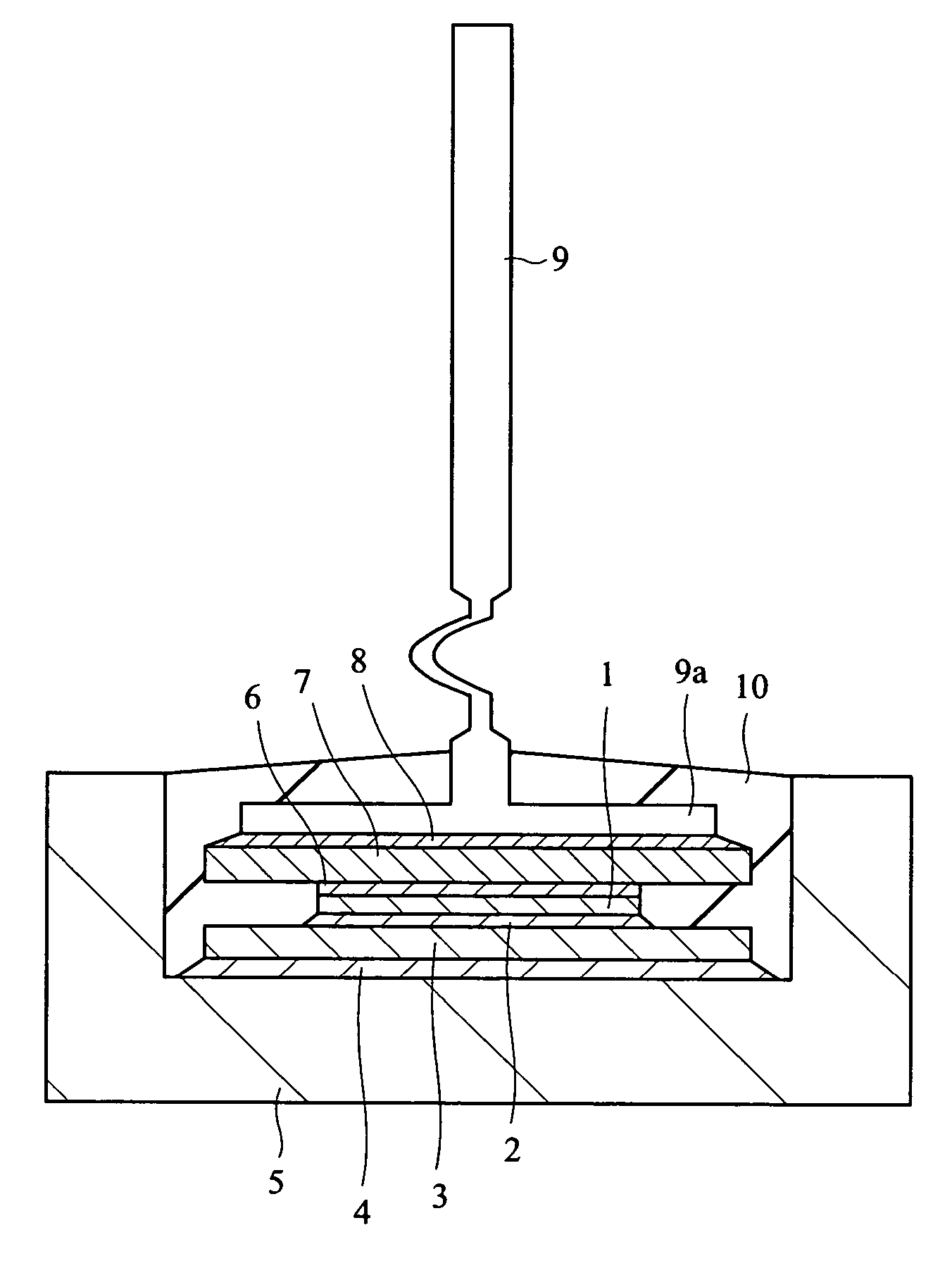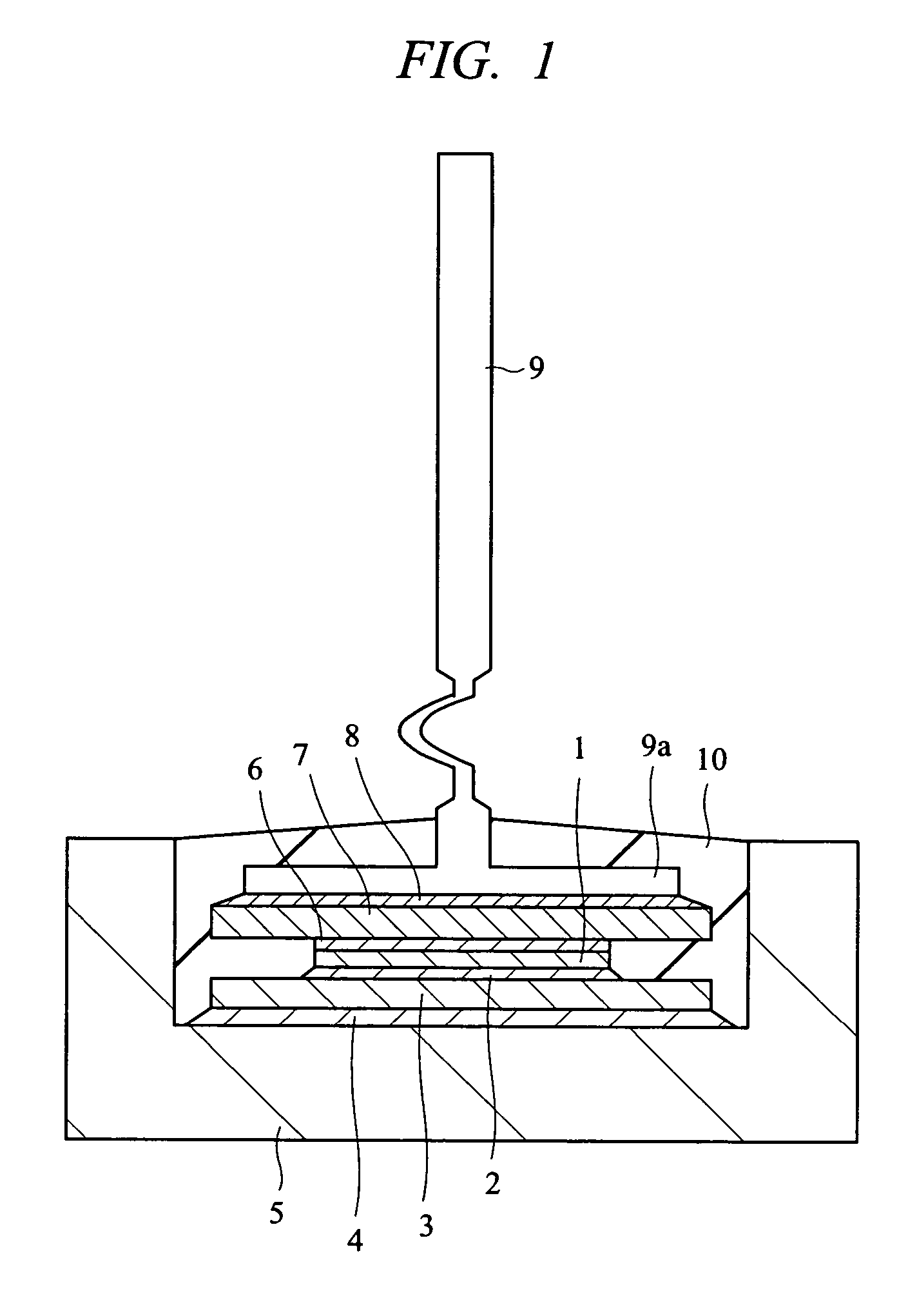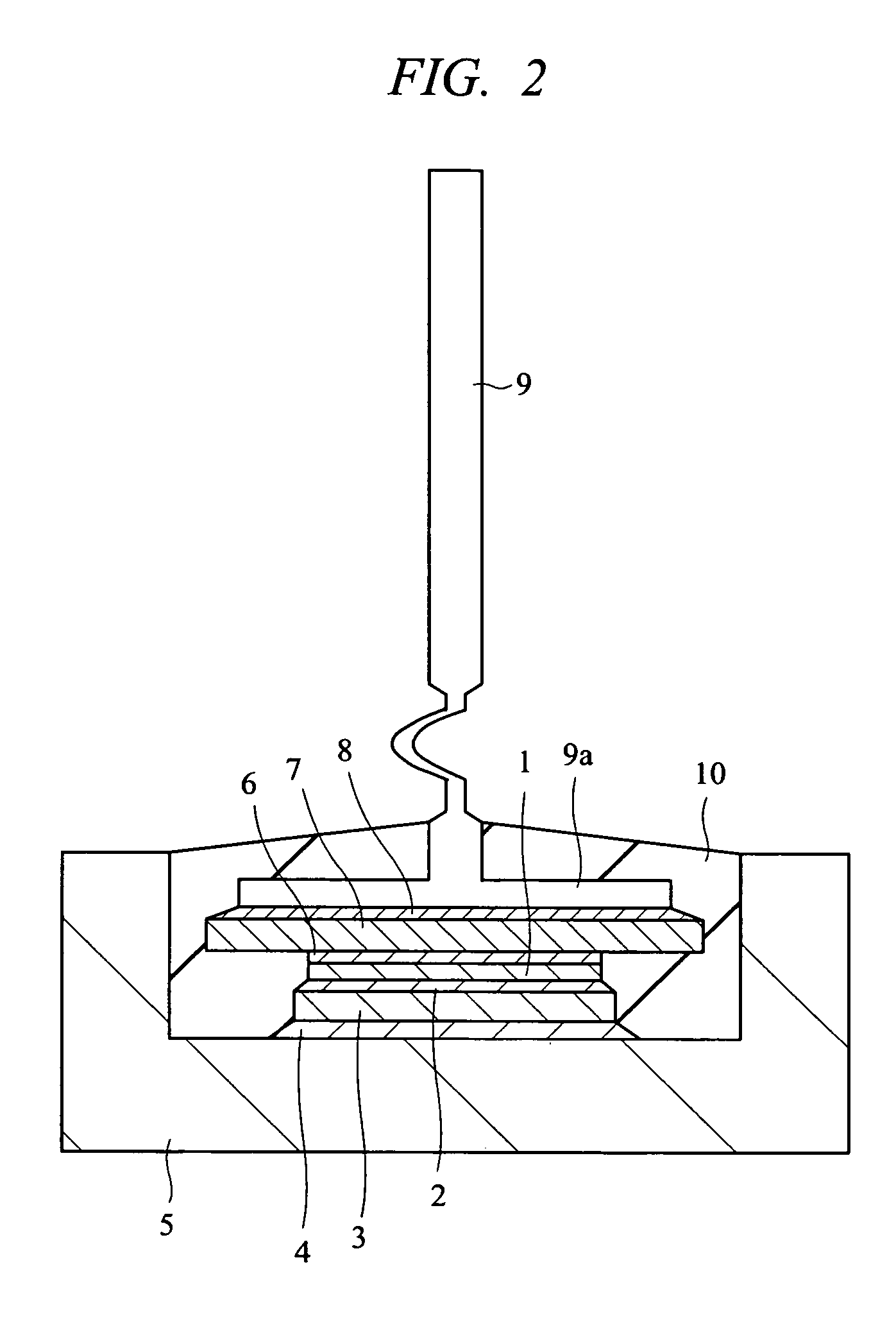Semiconductor device
a semiconductor chip and semiconductor technology, applied in semiconductor devices, semiconductor/solid-state device details, electrical devices, etc., can solve the problems of abnormally increasing the temperature of the semiconductor chip, the device is extremely susceptible to heating influence, and the automobile itself is used in a severe environment receiving repeated temperature increases and decreases
- Summary
- Abstract
- Description
- Claims
- Application Information
AI Technical Summary
Benefits of technology
Problems solved by technology
Method used
Image
Examples
first embodiment
[0014] A first embodiment of the present invention is described with reference to FIG. 1. A semiconductor device shown in FIG. 1 includes a semiconductor chip 1, a stress relief member 3 which is a second conductive member disposed via a joint member 2 (solder) on a lower surface side of the semiconductor chip 1, a case electrode 5 disposed via a joint member 4 on a further lower side of the stress relief member 3 on the lower surface side of the semiconductor chip 1, a stress relief member 7 which is a first conductive member disposed via a joint member 6 on an upper side of the semiconductor chip 1, a lead electrode 9 having a header portion of lead electrode 9a disposed via a joint member 8 on a further upper surface side of a stress relief member 7 on the upper surface side of the semiconductor chip 1, the header portion of lead electrode 9a having a diameter larger than the lead for the purpose of bonding with the joint member.
[0015] The semiconductor chip has a rectification ...
second embodiment
[0025] A second embodiment of the present invention is described with reference to FIG. 2. FIG. 2 depicts an example of structure in which, in a semiconductor device including a semiconductor chip 1, a stress relief member 3 disposed via a joint member 2 on a lower surface side of the semiconductor chip 1, a case electrode 5 disposed via a joint member 4 on a further lower side of the stress relief member 3 on the lower surface side of the semiconductor chip 1, a stress relief member 7 disposed via a joint member 6 on an upper side of the semiconductor chip 1, and a lead electrode 9 having a header portion of lead electrode 9a disposed via a joint member 8 on a further upper surface side of the stress relief member 7 on the upper surface side of the semiconductor chip 1, the header portion of lead electrode 9a having a diameter larger than a lead for the purpose of bonding with the joint member, the stress relief member 7 on the upper surface side of the semiconductor chip 1 and the...
PUM
 Login to View More
Login to View More Abstract
Description
Claims
Application Information
 Login to View More
Login to View More - R&D
- Intellectual Property
- Life Sciences
- Materials
- Tech Scout
- Unparalleled Data Quality
- Higher Quality Content
- 60% Fewer Hallucinations
Browse by: Latest US Patents, China's latest patents, Technical Efficacy Thesaurus, Application Domain, Technology Topic, Popular Technical Reports.
© 2025 PatSnap. All rights reserved.Legal|Privacy policy|Modern Slavery Act Transparency Statement|Sitemap|About US| Contact US: help@patsnap.com



